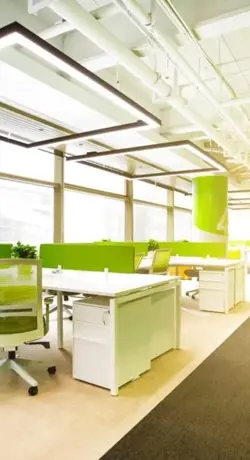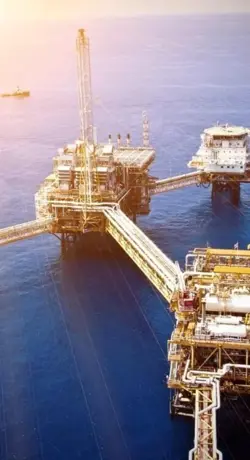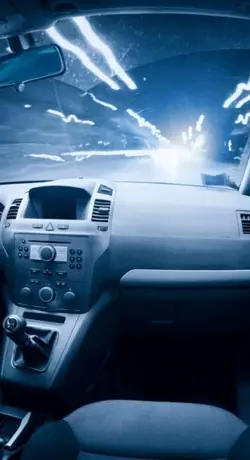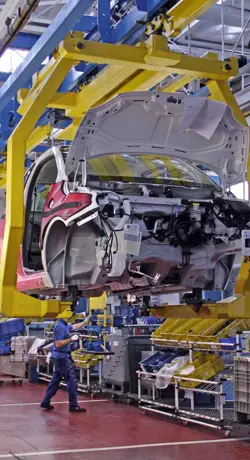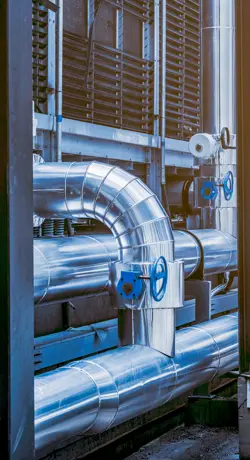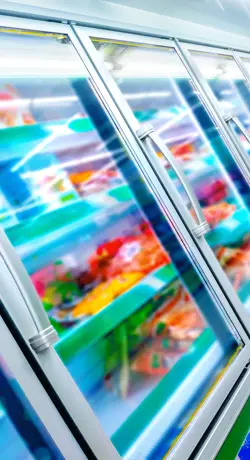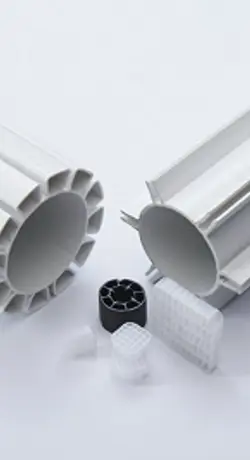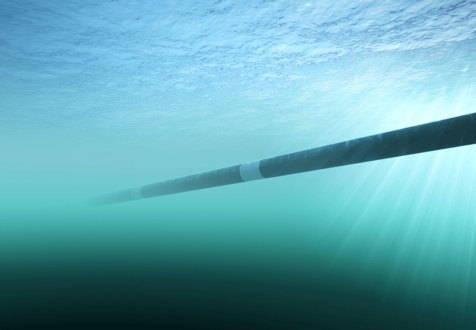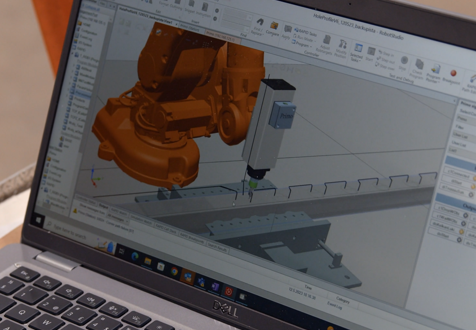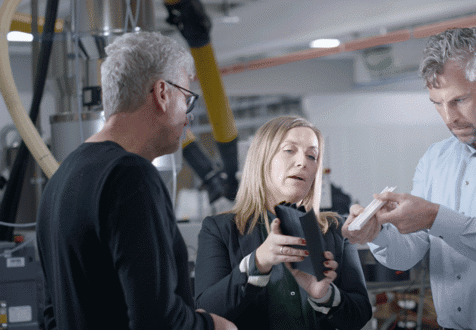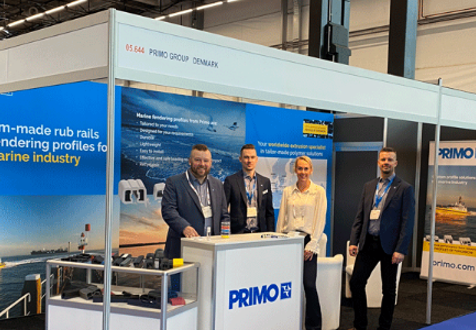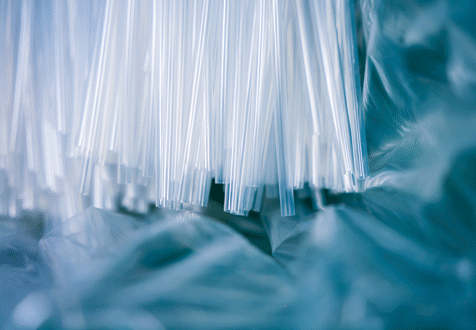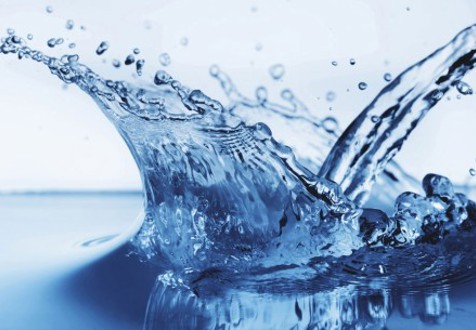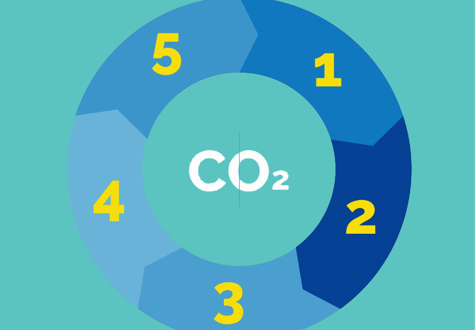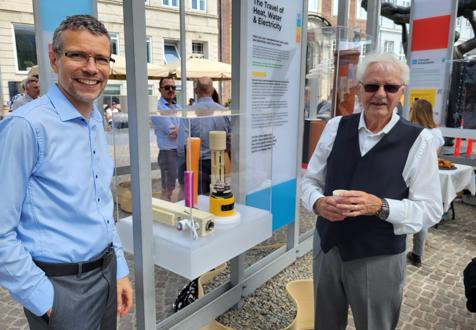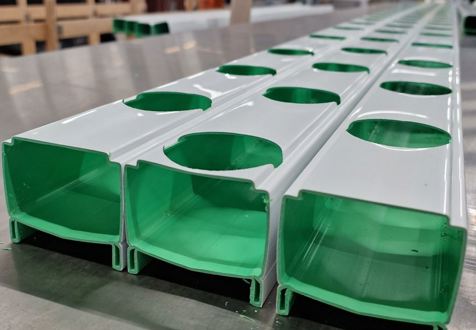Plastic Q&A - Common questions about plastic
Our team of specialists and project managers will assist you from the very beginning of your project to the final delivery. As a leading plastic manufacturer, we support your project with the latest in materials science, production technology, market knowledge and plastic engineering expertise to create a solution that is technologically and commercially sound and suited to your needs. Logistics, traceability, quality control and after after-sales service also play vital roles in the final supply chain.
ALL ABOUT PVC, PLASTICS & POLYMERS
We are here for you all the way
Yes, however, the challenge is to NOT combine PVC with other plastic types, or other materials in the waste management process.
PVC is easily recyclable and can be recycled several times without losing its technical properties. Each year around 800.000 tonnes of PVC waste are collected and recycled in Europe through VinylPlus®, the European PVC industry’s voluntary commitment to sustainable development. Primo is a founding member of WUPPI A/S, the Danish collection and recycling system for rigid PVC building products. WUPPI is part of VinylPlus.
The challenge is to sort out the PVC for recycling at end-of-life/post-consumer. Pure PVC can and should be collected and ground for recycling. To recycle PVC where the content is known and uniform is a relatively straightforward process and something we do every day at Primo. All our facilities have inhouse machines for re-grinding both scrap directly from our production and recycled materials from our customers. This is called recycling of production waste.
Post-consumer recycled PVC might have a slight color deviation from the original product. This problem can be handled by adding an outer layer of virgin PVC. This is for instance done in window profile and pipe recycling.
The recycled PVC might have a slight color deviation from the original product. This problem can be handled by adding new PVC. Many customers do accept the color deviation since the products can be marketed as recycled.
No. The PVC material in itself is inert and therefore not dangerous nor toxic. If permitted additives are added, there is no risk whatsoever in using PVC products. In the EU, the REACH regulation of chemicals ensures that the substances used in PVC are safe. Modern PVC building products that are recycled after many years of use are also safe and non-toxic.
When people often associate PVC with toxicity it is often related to unwanted phthalate plasticisers in soft PVC consumer products manufactured outside of the EU. Due to different regulations these products may still contain unwanted phthalates.
From 2020, EU countries have agreed to completely stop imports into the EU products with unwanted phthalates.
Years ago, PVC was rightfully linked to dioxin pollution. Both related to the production of the raw material and when PVC waste was incinerated. Now the issue is quite different. The history of PVC and dioxin is, in fact, an example of a positive environmental development, where efforts by both authorities and industry have received great results. Today, dioxin emissions from PVC production in the EU are negligible. PVC production today accounts for about 0.1% of the total emissions from industry, which has fallen by 99% in recent decades. In the case of industrial production, the steel and cement industry is now responsible for the highest emissions of dioxins to the environment.
Primo is working with Polyolefin as a replacement for PVC with phthalates in medical tubings.
Yes, PCV is a thermoplastic, meaning that it will become pliable or moldable at high temperatures. Thermoplastics can be heated and cooled multiple times without losing its strength and properties. The disadvantage is, of course, that PVC loses its stability in hot conditions and should not be used in environments where the temperature is higher than 70 °C. Heat stabilisers can be used to raise the melting point of PVC, or other materials such as thermoset plastics can be used instead. Thermoset plastics such as silicon and rubber are more heat resistant.
Learn more about the different types of plastic and their properties here.
No, PCV is not biodegradable. This is positive as it ensures a very long service life for PVC products. It also means means that PVC will keep its properties in natural environments, even if it is worn into smaller pieces. PVC is the source of most microplastic pollution, and this stresses the importance of recycling PVC in circular business models. Other plastic types are biodegradable. For instance, Primo is producing a biodegradable profile for greeneries that helps plants to grow.
Yes! PVC is standard in all kinds of outdoor and construction applications because of its water-tight and non-water obtaining properties. PVC is widely used for inflatable boats and for fiberglass. If you own a classic raincoat, it will most likely be made of PVC.
Read more about how we supply the marine industry with PVC-profiles.
Yes! PVC can be produced in any color, and you can also paint it subsequently. The biggest challenge is re-painting soft PVC profiles like bumpers for boats, and all kinds of sealings as the painting might crack when the profiles are bend. Painting solid PVC is pretty much as painting wood surfaces. The PVC surface should be cleaned and sanded before applying the paint. Paint and PVC will not go into chemical bonding with each other.
No! The density of PVC is 1,467 – it's heavier than water and will sink. Other plastic types will float. For instance, Polyethylene (varies 0.88-0.96 in density) and Polypropylene (approx. 0.9) are lighter materials than water and, therefore, better suited for applications that should float. For a list of the density of different plastic types, you can refer to the overview.
Yes! PVC is a thermoplastic, meaning that it will melt at a specific temperature and solidify again when cooled. At temperatures of more than 70 °C. PVC will start losing properties. The melting point of PVC ranges from 100 °C to 260 °C, depending on the additives in the PVC. Pure PVC will self-ignite at 450 °C, while wood self-ignites at about 300 °C and paper at 230 °C. For more information about heat resistance in plastic for special purposes such as lighting appliances and electric systems, please contact our specialists.
Biodegradable plastic is a plastic-type that can be completely decomposed by living organisms. While PVC can not be biodegraded other types can. Polyhydroxyalkanoates (PHAs) are biodegradable plastic made by microorganisms. Polylactic acid (PLA) and other types are made from starch, such as corn, sugarcane or sugar beets. Similar properties can be found in cellulose-based plastics. A common misconception is that fossil-based plastic types are not biodegradable. This is not true. Some petroleum-based plastics made from crude oil, coal, or natural gas can be biodegraded. This goes for:
- Polyglycolic acid (PGA)
- Polybutylene succinate (PBS)
- Polycaprolactone (PCL)
- Poly(vinyl alcohol) (PVA, PVOH)
- Polybutylene adipate terephthalate (PBAT)
Learn more about how Primo develops new biodegradable plastic materials for the medico industry.
It is disputed what biodegradable means. Over the span of time, every material will, at some point, be dissolved into its original ingredients, meaning that every kind of plastic can be said to be degradable. What consumers, environmentalists and most of the industry mean with the word is that biodegradable plastic should be easily compostable along with, for example, household waste.
For further information about biodegradable plastic see the excellent Wikipedia article about the subject here:
Plastic is a wide range of materials made from organic compounds. The essential ingredient in plastic is carbon mixed with oxygen, nitrogen, or sulfur formed in a chain-like polymer structure. Natural polymers are, for instance, silk, rubber, starch, and rubber. Synthetic polymers are usually based on fossil petrochemical, but due to the limits of crude oil and environmental concerns, bioplastic is a growing field of research.
Learn more about how different kinds of plastic are used for different purposes.
Yes! Most plastics can be recycled in one way or the other. Typically, used plastic is ground into small bits and remolded to new products over and over again. Biodegradable plastics are not recycled but instead decomposed. A group of plastics, Thermosets, will lose their properties when heated and can not be used again for the original purpose. Rubber, which chemically is a thermoset plastic, is an example of a plastic compound that can not be recycled. However, even thermosets can be ground and used as fillers for other plastic products where the original properties are not necessary.
A common problem when recycling plastic is that many types of plastic are mixed when thrown away as waste. Mixed plastic is tough to re-use since the properties of the batch of waste are unknown. The plastic industry is interested in recycling since it lowers the cost of production, and it meets a need of the customers. Learn more about how Primo develops recyclable alternatives to unrecyclable standard products for the building industry.
Yes! Traditionally plastic has been made from petrochemicals such as natural gas and crude oil, and this is still the most used method. But plastic can be made from many different raw materials. For instance, plastic can be produced from organic material such as starch, which can be derived from a number of sources, including wood and vegetable waste.
Bio-based plastics play a central role in climate reduction. What is special about PVC plastic is that more than half of the raw material is salt, which is an inexhaustible resource. The remainder, which today is produced from oil or gas, can eventually be replaced by a bio-based raw material resulting in a 90% decrease in CO2. Two major producers of PVC raw materials have just presented bio-based PVC. In Sweden, a collaboration between the PVC industry and other plastic industries, universities, and governmental entities is researching whether lumber remnants can be transformed into plastics raw material.
There is a lot of controversy about the use of land for plastic production. Currently, only 0.02 percent of agricultural land is used to supply bio-plastic, but with the rising interest and demand, the percentage of land use is expected to rise.
If the bioplastic industry expands into more agricultural land, some worry it will take over land that is needed to feed the world population. It is therefore crucial that bio-plastic is made from waste products.
Yes! Bio-plastics, or bio-based polymers, is gaining ground in the market. In contrast to traditional plastic, the feedstock is derived from plants or other renewable sources. Bio-based plastic has the same properties as traditional plastic, which ensures a long service life.
Bio-degradable plastic is also made from renewable feedstock. The difference between bio-based and bio-degradable plastic is that the latter can be composted. Bio-degradable plastic is primarily used for disposable products such as packaging peanuts, straws, pots and bowls, cutlery, teabags, bottles, diapers, and crockery. It must be stressed that bio-degradable does not necessarily mean the product can be thrown into your backyard compost heap. Most bio-degradable plastic has to go to a commercial composting plant to be decomposed.
Yes! Special additives can modify almost any polymer to be conductive. Some raw material suppliers of polymer are specialized in this field, and conductive polymers and semi-conductive polymers play an important role in many fields. For instance, in the mining industry, they must use conductive plastic materials to avoid static electricity. Others fields are:
- Solar panels
- Electronic circuits
- Various sensors
- LED displays
- Batteries
Without additives, polymer such as PVC are nonconductive, and this is an important property in the electronic industry since plastic is used for mounting electronic components. For instance, busbars are typically built using extruded nonconductive plastic profiles with conductive copper profiles.
PVC and other thermoplastics can all be recycled. They can be melted and reshaped into new forms. Recycling thermoplastic polymers is an important property and has been in use since the beginning of the plastic industry. Thermoset polymers can not be recycled. Thermosets are polymers such as rubber, fiberglass, and silicone, and in the production process, they are irreversibly hardened and will lose their chemical properties when re-heated. Thermosets can be re-used for other purposes, but used rubber tires can not be made into new tires.
Thermoplastics can be recycled and used again for their original purpose. The process is, in general simple, but is often complicated by additives in the plastic and if more than one type of plastic is mixed together. Recycled plastic from a mix of unknown plastic types has unreliable properties, and it is challenging to produce new quality products from. The plastic industry is working on recycling programs where known plastic types are returned to the plant and on procedures for using mixed recycled plastic of low quality for areas where colour and structural resilience is not that important.
As a rule of thumb, all hard plastic types can be recycled. In the plastic industry, and among material scientists, the word polymers is used rather than plastic. Polymers cover a group of naturally occurring materials and synthetic from vinyl and PVC to silk and rubber. When it comes to recycling, in terms of using the material when disposed to build a new, similar product, we can only recycle the group of polymers called thermoplastics. They have the unique property that they keep their chemical structure intact even when melted and cooled again.
Among the thermoplastics we find:
- Polythene
- Polycarbonate
- Acrylic
- Polyamide
- Polystyrene
- Polypropylene (PP)
- Acrylonitrile Butadiene Styrene (ABS)
- Polyester
Polymers that can not be recycled are for instance:
- Polyurethanes
- Polyureas
- Polyester
- Vinyl Ester
- Polyimides
- Epoxy (e.g., carbon fiber epoxy resin)
- Phenolics
- Bismaleimide (BMI)
- Fluoropolymers
- Polytetrafluoroethylene (PTFE)
- Polyvinylidene fluoride (PVDF)
- Melamine
- Silicone
- Urea Formaldehyde
Plastic and rubber are both popular names for groups of polymers. Rubber can be divided into 3 groups. Nature rubber, typically harvested from the Amazonian rubber tree (Hevea brasiliensis), EPDM (ethylene propylene diene monomer rubber) - synthethic rubber often used for sealings and roof, and thermoplastic rubbers which often is a mix between different polymers.
Plastic is usually used for its thermoplastics properties and rubber for thermosets. Thermoplastics can be melted and reshaped again and again, while thermosets will lose its properties when melted. The advantage of thermosets is that they can tolerate higher temperatures than thermoplastics.
Rubber has the disadvantage that it will stiffen and be exposed to the risk of cracking at low temperatures.
Plastic and polymer are the same things. Chemists and industry specialists use polymer -plastic is the more popular name meaning "capable of shaping or molding a mass of matter."
Vinyl is another word for PVC (Polyvinyl chloride). PVC is the third most common type of plastic. Polyethylene, for instance, is a vinyl, and it is the compound used for plastic bags, plastic films, containers, and plastic bottles.
Acrylic is a group of thermoplastic polymers, known as polymethyl methacrylate or polyacrylates (PMMA). Acrylic is used for its transparency like glass, known as plexiglass. The advantage over glass is that acrylic does not splinter, and it is flexible, cheap to produce, and durable.
Another common acrylic, often used in paint, is polyhydroxyethylmethacrylate.
Polythene is also called Polyethylene (PE) and is the most common type of plastic. Plastic is a generic term that covers a whole family of materials, and polythene is one of those. It is not so strange, however, that the terms plastic and polythene often get mixed up.
Polythene is a thermoplastic, and it is used for plastic bags, plastic pipes, medical devices, home appliances, plastic containers, and bottles and much, much more.
Polyethylene is not considered biodegradable, but it can, since it is a thermoplastic, be remolded and recycled many times. Newer research shows that certain types of bacteria and animals can digest polyethylene.
At Primo, we extrude a whole range of different materials in the plastic-family; read more about their individual characteristics and properties here:
Roughly speaking, a material is either a conductor or an insulator with regards to electricity. Conductors (like copper wire) let the electrical current flow easily with low resistance, while insulators – on the other hand – do not let current flow easily.
In general, metals are pretty good conductors, while materials like plastic, ceramic, glass, or rubber are good insulators.
This is one of the reasons why plastic profiles are commonly used as a primary element in products like lighting-installations and fixtures, where the goal is to create a safe, elegant, and simple installation.
Most metals conduct heat – or cold! – quite well, while materials like plastic or wood are better insulators, as they keep cold things from warming up and vice versa.
There are materials better suited for the insulation of entire buildings than plastic. That goes for glass or stone wool, for instance, as they are cheaper and have a comparatively high R-value.
But the heat insulation properties of plastic are interesting when considering the choice of material of frames for windows and doors. For these purposes, a plastic profile has better insulation-properties than wood or – especially – metal, which helps prevent cold "bridges" and build-up of condensation.
Furthermore, plastic is a hygienic material; it is exceptionally durable and does not – as a general rule – require maintenance.
Plastic and metal have different properties. You would not build an oven with plastic, and you would not build a toothbrush with metal.
In general, plastic is lighter, more comfortable to form, because of a lower melting point, and cheaper to produce than metal. Other differences are that metals are electrically conductive and structurally more durable than plastic, while plastic is more flexible than metal. In some areas, plastic and metal compete. For instance, newer types of plastic are so strong that they are suggested as material for building construction. Also, in shipbuilding, fiberglass plastic is popular when designing smaller boats, while larger vessels tend to be built with metal.
Material development is an important area in the plastic industry, and new compounds and applications are explored every day. For instance, sectors such as medico, aerospace, and automotive are developing new, greener, and better products based on polymers.
Learn more about how ideas become products in the plastic industry here
Aluminium and plastic share a number of properties. Both are lightweight, plastic being the lightest, and both can be extruded and recycled. This means that engineers often have to choose between plastic and aluminium when designing new products.
The significant difference is that aluminium is a metal, while plastics are made of organic molecules. Plastic is nonconductive, while aluminium conducts electricity.
Aluminium is stronger than plastic and is widely used where structural strength is essential. A good example is the use of aluminium for frames in some luxury cars, planes, and trains.
Plastic can be enforced with materials to make it stronger, but not as strong as aluminium. Another important consideration when choosing between plastic and aluminium is that plastic is much cheaper to produce and less energy-consuming than aluminium.
It depends on many factors. Plastic and word compete in many areas, and plastic is often the cheaper and even more environmentally friendly choice. When looking at the entire product life cycle of both plastic and wood, many plastic types have the advantage over wood that they are chemically persistent. This means that plastic can be remolded after use into a new product, while wood decomposes. While in use, plastic is basically maintenance-free, while wood, depending on what sort it is and the conditions it is used in, needs care to remain stable.
Wood production requires deforestation and energy consuming after treatment, such as cutting and transportation.
In some areas, plastic is definitely better on most parameters. Plastic windows and doors, for instance, are more reliable, cheaper, and have better structural stability. Furthermore, they are resistant to changes in temperature; they are waterproof and will not rot.
Wood, however, has appealing aesthetic properties that plastic cannot compete with.
Extrusion is a process where a material is pressed through a die. Extrusion is used in many industries and even in households where food such as pasta and meat are extruded. In the industry, extrusion is used primarily for plastics and steel, especially aluminium.
There are thousands of different types of plastic or polymers. Some polymer types are naturally occurring. They are usually water-based, and we know them as silk, wool, DNA, cellulose, and proteins. Synthetic or human-made polymers can be placed in 7 general groups:
- PETE - (or PET) Polyethylene Terephthalate
- HDPE - High-Density Polyethylene
- PVC - Polyvinyl Chloride
- PDPE - Low-Density Polyethylene
- PP - Polypropylene
- PS - Polystyrene or Styrofoam
- Other - Miscellaneous plastics including polycarbonate, polylactide, acrylic, acrylonitrile butadiene, styrene, fiberglass, and nylon)
Yes! We can manufacture a wide array of profiles and assist in developing practically any type of plastic profile for your product.
Our specialists and project managers work closely with our customers from the beginning of your project to the final delivery. We support your project with the latest in materials science, production technology, market knowledge, and plastic engineering expertise. This ensures a final plastic profile that is technologically and commercially sound and suited to your needs.
You have the idea; together, we make it real. Primo's specialists work closely with our customers from the very beginning in order to optimize the entire process – from development to production. We put the idea to the test regarding requirements, ease of use, agility in the production process, costs, sustainability, durability, and many other important factors, including compliance with standards and legal requirements.
Read more about our process here:
Polymers are a whole family of compounds, and plastic is a specific type of polymers. There are several types of polymers. Chemically speaking, they are lengthy chain compounds composed of monomers, a molecule that can be bonded to other identical molecules. Polymers are large molecules consisting of vast amounts of smaller, identical molecules.
Plastics are a specific type of polymers – or rather, a material comprised of polymers – and has plenty of practical uses. For instance, plastic is versatile, durable, flexible, and can reasonably easily be extruded into profiles used in the construction or automotive industry.
Curious about plastic? Read more here:
Yes! Primo is proud to design and manufacture new profiles to be completely recyclable at the end of the product's life cycle. Furthermore, our processes are designed to minimize waste during production.
It is even possible to produce plastic profiles from 100% recycled materials with only minor deviances from the traditional product. This ensures that you can offer your customers a flexible, durable, and sustainable solution with a minimal carbon footprint.
Yes! It is possible to document the carbon footprint of your profile to a fairly large degree. Actually, modern plastic can be a very sustainable compound when the entire lifecycle is taken into account. This even holds true when you compare plastic with materials like wood or metal.
At Primo, we have a good understanding of our production-related CO2-footprint. We are confident to share this knowledge with customers who wish to calculate, document, and present a complete overview of their products' total CO2-footprint. As a specialist in our industry, we also try to reduce unnecessary CO2 in transportation. The area is in its infancy, but we can already give our customers a rough but pretty confident idea about what kind of CO2 footprint is associated with Primo's profiles.
Sustainability is at the core of Inter Primo's business and is integrated into all our processes. Our vision is a world without plastic pollution. We aim high and take action wherever we can.
For instance, we are investing in machines to re-grind used plastic to be recycled in circular business models. We secure that no microplastic particles leave our factories as a part of Marine Litter Solutions.
Extrusion is a process where pellets or plastic powder is heated and forced through a die. A screw usually mixes the material and forces it out of the opening in the die. Afterward, the profile is cooled down. Relatively thin profiles or threads can be cooled simply through contact with air, while more complex or massive profiles are usually cooled with water.
Extrusion of plastic has several advantages, for instance:
– High output and comparably low material costs.
– High variety and length options make it possible to maximize yields.
– Relatively low tooling costs.
Primo produces plastic profiles through a process called extrusion. It is an efficient and highly automated process where pellets or plastic powder is heated and forced through a die. During extrusion, the material is mixed, heated, forced out of the opening in a die, and finally cooled down.
It is possible to extrude several types of materials with distinct properties into one profile – called mono, co- or triple extrusion. We are even able to produce profiles from 100% recycled materials with only minor deviances from the traditional product.
At Primo, we thoroughly follow the entire operations to ensure that all quality standards are respected according to the agreed terms.
Yes, we are very likely able to help you, no matter what kind of plastic profile you need to produce. We can also help you optimize the production or design of an existing profile.
At Primo, we manufacture a wide array of profiles and assist in developing practically any type of plastic profile for your product. Our specialists and project managers work closely with our customers from the beginning of your project to the final delivery. We support your project with the latest in materials science, production technology, market knowledge, and plastic engineering expertise.
Or, to put it short: You have the idea; together we make it real.
At Primo, we extrude a wide array of plastic materials, each with its specific characteristics and qualities. No matter the purpose, it is possible to optimize the composition of each specific plastic profile according to product lifetime, thermal properties, stability, temperature, and UV resistance. For special applications, we can extrude two or even three different plastic materials into the same profile in a process called co-extrusion.
At https://www.primo.com/our-process/material, you can read a lot more about the exact properties of selected materials such as:
- ABS
- ASA
- EVA
- PA
- PE/HDPE
- PE/LDPE
- PP
- PC, PC/ABS
- PET
- PMMA
- POM
- PS, GPPS
- PS, HIPS
- PVC
- PUR
- TPE, TPV, TPU, TPO
Yes! Extruding several materials in the same profile is a common, but advanced process also called co-extrusion. At Primo we also do triple-extrusions on specialised machinery. The benefits are obvious. By extruding two or more raw materials in the same profile more properties can be added to the final product.
In co-extrusion productions lines two extruders are used to apply material into the die that forms the profile. It must be done with great care and precision in order to get the right amount of material.
The result is a profile with two different types of plastic. One can be stiff and good for assembly and the other part may be soft and useful for sealing purposes.
Co-extrusion can be used to apply a thin layer of an expensive polymer to resist weather on a more structural profile.
Co-extrusion is also a way of using low quality plastic, such a recycled plastic from mixed sources. With co-extrusions this type of plastic can be used as filler in profiles with a higher quality outer layer.
At Primo, co-extrusion is often used for lighting profiles and for window- and door profiles. Read more here:
https://www.primo.com/custom-solutions/building/windows-doors
We can produce plastic profiles in any colour you wish. If the colour can be described on the RAL (Reichs-Ausschuß für Lieferbedingungen und Gütesicherung) - colour chart, it can be extruded. Often our customers have an existing profile or another physical item with a specific colour. In such a case, we use spectrometer technology to identify the precise colour. The process is so accurate that we usually get the right colour the first time.
At Primo, we most often use masterbatches with concentrated colour pigment. The masterbatch is mixed into the colour neutral polymer raw material. This is an economical method and secures a very accurate result.
Colours in plastic for indoor use are very durable, but for outside UV-photodegradation can be a problem for all colours, except for black and white. To counteract this, a different coating can be applied to the profile.
Learn more about our process here: Link
A thermal break in a construction is a material with a low thermal conductivity. The purpose of a thermal break is to insulate and reduce the loss of heat - or to preserve the cool from air conditioning inside.
In the plastic industry thermal breaks is considered when extruded frames for windows and doors, refrigerators, vehicles etc. leave space for either insulating air pockets or insertion of other materials. Plastic profiles can also function as thermal breaks in itself. Here you can read more about plastic profiles for the different industries:
Thermal breaks for refrigeration & HVAC systems
Thermal insulation for windows and doors
The thermal insulating capacity of plastics is very high compared to other materials. This is the reason we see more and more products and buildings using plastic as thermal breaks to reduce the cost of heat and air conditioning - and ultimately reduce the CO2-footprint.
Yes. We extrude transparent or translucent profiles from many plastic materials.
Each plastic material has unique transparency, endurance, and diffusion properties. Depending on how you plan to use the profile, we'll recommend the right plastic material.
When extruding translucent profiles, we can change their colour or optical qualities. Light still transmits through the profile.
Examples of transparent and translucent profiles we've produced include:
- pricing rails for supermarket shelves
- gaskets for sealing
- tubes for medical applications
- slatted covers for swimming pools
- LED lighting and PMMA for LED lighting
Read more about polymer raw materials
It depends on where you plan to use the profile.
There are two popular plastic types in lighting profiles. One is polycarbonate (PC). The other is polymethylmethacrylate, also known as PMMA.
PC profiles are most suitable for warehouse, car park, and transportation vehicle lighting. PC is a tough, flame-retardant plastic that handles mechanical stress and high temperatures. It's approved for industry specific standards such as UL94 V0, EN 45545 and ECE R118.
PMMA profiles are most suitable for the linear lenses and diffusers used in offices, retail stores, and public spaces. PMMA transmits light up to 97% better than glass, which is good for positive human experiences. PMMA is a surface-hard plastic resistant to ultra-violet radiation.
Yes. In fact, we have dedicated production lines for extruding busbars for lighting tracks. Raw materials, tooling, packaging, and quality control are of the highest order.
Copper conductors of different diameters and designs can be inserted into the plastic profile.
We manufacture busbars from our own PVC recipe and from halogen-free materials. Both solutions fulfil electrical industry-specific flammability and insulation requirements.
Our Business Areas
Insights
Our people are dedicated to finding solutions to every challenge. That spirit makes for some great stories.
View all news & articles
Do you want to know more about plastic materials and plastic extrusion

Jaakko Salo
Group Commercial DirectorJaakko Salo is the group's head of sales, with a broad understanding of the different markets and industries. He is also our specialist in linear lighting profiles, busbars, and diffusers: As an experienced expert in the field, Jaakko's many years of experience and contributions show his deep comprehension of the possibilities of the linear lighting landscape. He's committed to innovation in his work and has collaborated with architects, designers, and industry partners to create lighting profiles that go beyond mere functionality. Jaakko can help you shape your success and light the way for the industry.


